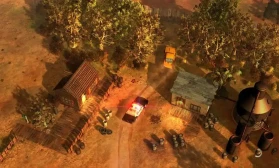Monument Valley: Optical Illusions and Puzzling Paths – A Review
By [Your Name]
Introduction
Monument Valley, developed by ustwo games, is a visually stunning puzzle game that blends art, architecture, and mind-bending optical illusions into a captivating experience. Since its release in 2014, the game has garnered critical acclaim for its unique aesthetic, soothing soundtrack, and clever level design. This review explores the game's mechanics, artistic direction, and the psychological appeal of its impossible geometry.

The Allure of Impossible Architecture
1. Inspired by M.C. Escher
Monument Valley draws heavy inspiration from the works of Dutch artist M.C. Escher, known for his impossible constructions and optical illusions. The game’s levels are built around structures that defy Euclidean geometry, creating pathways that twist and turn in ways that seem physically impossible.
2. A World of Shifting Perspectives
Players guide the silent protagonist, Princess Ida, through a series of mazes where rotating platforms, hidden doors, and shifting walls alter the perception of space. What appears to be an impassable gap from one angle becomes a walkable path when the perspective changes.
3. Minimalist Storytelling
The narrative is subtle, conveyed through brief interactions with other characters and environmental storytelling. The game avoids heavy exposition, allowing players to interpret the journey in their own way.
Gameplay Mechanics: Simple Yet Profound
1. Intuitive Touch Controls
Monument Valley’s controls are simple—players tap to move Ida and interact with levers, switches, and rotating mechanisms. The lack of complex inputs keeps the focus on exploration and puzzle-solving.
2. Puzzle Design: Elegant and Challenging
Each level introduces new mechanics, such as:
- Impossible staircases that loop back on themselves.
- Moving platforms that create new paths when shifted.
- Optical illusions where two separate structures align to form a bridge.
The puzzles are never overly difficult but require players to think creatively about perspective.
3. The Role of Sound and Silence
The ambient soundtrack by Stafford Bawler complements the serene atmosphere. The absence of dialogue and the use of soft chimes and echoes enhance the meditative experience.
Artistic Direction: A Visual Masterpiece
1. Aesthetic Choices
- Vibrant Color Palettes: Each level features a distinct color scheme, from warm desert hues to cool blues and purples.
- Minimalist Design: Clean lines and geometric shapes create a dreamlike world.
- Dynamic Lighting: Shadows and light play crucial roles in revealing hidden paths.
2. The Influence of Monument Valley’s Real-World Namesake
The game shares its name with the real Monument Valley, a region on the Arizona-Utah border known for its towering sandstone buttes. While the game’s architecture is more surreal, the vast, isolated landscapes evoke a similar sense of wonder.
Psychological Appeal: Why We Love Optical Illusions
1. The Brain’s Fascination with Impossible Objects
Our brains are wired to recognize patterns and make sense of 3D spaces. When confronted with impossible geometry, the mind struggles to reconcile conflicting visual cues, creating a sense of intrigue and satisfaction when the illusion is "solved."
2. The Calming Effect of Orderly Puzzles
Unlike fast-paced action games, Monument Valley offers a meditative experience. The slow pace and methodical problem-solving can reduce stress, making it ideal for relaxation.
3. The Joy of Discovery
Each solved puzzle provides a small but rewarding "aha!" moment, reinforcing player engagement without frustration.
Criticisms and Limitations
1. Short Playtime
The main game can be completed in about 2-3 hours, which some players may find too brief. However, the expansion Forgotten Shores and sequel Monument Valley 2 offer additional content.
2. Limited Replayability
Once puzzles are solved, there’s little incentive to replay unless revisiting for the art and music.
3. Some Puzzles May Feel Too Easy
Experienced puzzle gamers might find certain levels straightforward, though the game prioritizes aesthetic and emotional impact over difficulty.
Conclusion: A Timeless Puzzle Experience
Monument Valley is more than just a game—it’s an interactive work of art. Its blend of optical illusions, serene atmosphere, and elegant puzzles creates an experience that lingers in the mind long after completion. While it may not challenge hardcore gamers, its beauty and creativity make it a must-play for fans of indie games and visual storytelling.
For those seeking a brief escape into a world of impossible architecture and quiet contemplation, Monument Valley remains an unforgettable journey.
Tags:
MonumentValley #PuzzleGame #OpticalIllusions #IndieGames #GameReview #MC Escher #MobileGaming #ArtInGames #MindBendingPuzzles
Would you like any modifications or additional sections?












